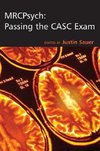
-
 Taliansky jazyk
Taliansky jazyk
Canine Melanoma: immunohistochemical evaluation of CD117/KIT receptor expression
Autor: Gino Angelo Santarelli
Doctoral Thesis / Dissertation from the year 2011 in the subject Medicine - Other, grade: EQF level 8, ISCED level 8, Università degli Studi di Perugia (Faculty of Veterinary Medicine, Department of Biopathological Sciences and Hygiene of Animal and Food... Viac o knihe
Na objednávku, dodanie 2-4 týždne
44.37 €
bežná cena: 49.30 €
O knihe
Doctoral Thesis / Dissertation from the year 2011 in the subject Medicine - Other, grade: EQF level 8, ISCED level 8, Università degli Studi di Perugia (Faculty of Veterinary Medicine, Department of Biopathological Sciences and Hygiene of Animal and Food Productions, Section of Veterinary Pathology), course: PhD in "Physiopathology and Medicine of Companion Animals", Academic Discipline VET/03 - Veterinary Pathology, language: Italian, abstract: Melanocytic tumours are frequent in dogs and the prognosis is based on the classical histological hallmarks of malignancy and proliferative activity. A further prognostic feature is the anatomical site, with oral, nailbed and mucocutaneous tumours being more aggressive than cutaneous and ocular ones; the reason of these differences are still unclear. Little is known about the the biology af canine melanoma.
CD117/KIT is a receptor probably involved in canine melanocytic neoplasia. This protein is the product of c-kit gene and is a tyrosine kinase receptor known to be important in the development of several cell types, including melanocytes. It is also involved in the pathogenesis of some tumours, including GIST (gastro-intestinal stromal tumours), derived from interstitial cells of Cajal, and mast cell proliferative disease in men and animals. In these tumours, evaluation of KIT expression is useful for diagnostic and prognostic purposes. Furthermore, identification of specific c-kit mutations is becoming a promising substrate for novel therapeutic approaches.
CD117/KIT is involved in proliferation, survival, migration and differentiation of melanoblasts and its role in human melanocytic tumours is still debated. Indeed former studies have demonstrated a loss of KIT expression during tumour progression, while recent ones identified several mutations of c-kit gene in distinct anatomical subtypes, associated with increased CD117 immunoreactivity.
Aim of this thesis is to review biologic and molecular characteristics of canine melanocytic tumours and to evaluate, by immunohistochemistry, KIT expression in canine melanomas from different anatomical sites.
For this purpose, a series of 66 malignant melanocytic tumors from different body sites has been selected and stained with an immunohistochemical protocol using anti-CD117/KIT antibody.
Immunoreactivity was detected in 42 samples (63,6%), being equally represented in cutaneous (71,4%), mucocutaneous (77,8%) and oral (65%) tumor, and less commonly in nailbed (57,1%), metastatic (33%) and ocular (33%) tumors; interstinglly, among positive tumors, oral ones showed the highest percentage of high grade immunoreactivity.
In a perspective scenario, this data could suggest the potential role of KIT overexpression in the pathogenesis of canine melanoma, and suggest the use of specific tyrosine-kinase inhibitors. Further studies are needed to confirm such an hypothesis.
- Vydavateľstvo: GRIN Verlag
- Rok vydania: 2018
- Formát: Paperback
- Rozmer: 210 x 148 mm
- Jazyk: Taliansky jazyk
- ISBN: 9783668755703



 Anglický jazyk
Anglický jazyk 








